Have you ever wondered what life was like inside a state prison in the early 1900s? Or how the prisoners were treated, and the labor they were made to perform?
Maybe you have heard of the infamous Frank Conley or the Powell County Museum and Arts Foundation, but you want to know more.
Whatever the reason, this article will give you a fascinating glimpse into the history of Montana State Prison.
As we explore the prison’s history, we will delve into the personal stories of prisoners, the facilities they lived in, the warden who ran the prison, and its current state to date.
I will also share my expertise on the topic, having studied and researched Montana State Prison’s history for some time.
- Related article: Why Did Montana Become a State
So whether you are someone who enjoys learning about crime, punishment, and correctional facilities or has a general interest in historic places, this article is for you.
Join me on this adventure as we uncover the secrets and stories behind Montana State Prison’s walls. Let’s get started!
Montana State Prison History
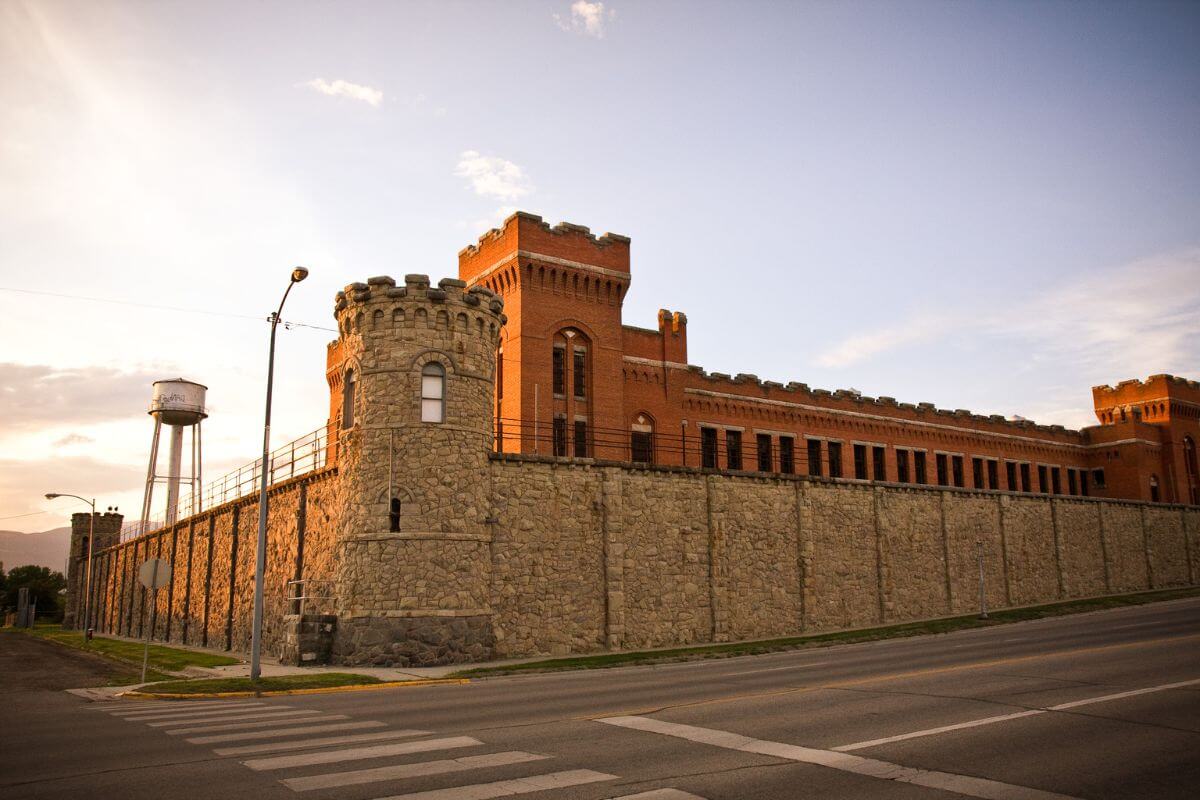
As a travel writer, I often find myself drawn to the tales of the past. One story that has always intrigued me is the establishment of the Montana State Prison.
It all began during the Montana Gold Rush of 1862, which brought in hardworking fortune seekers, but unfortunately also attracted criminals who were looking to take advantage of the situation.
The only problem was that during the Gold Rush days, the Territory of Montana had no prison to contain these criminals.
Federal prisoners convicted of breaking Congressional laws were sent to the Nebraska State Penitentiary. While those who violated territorial laws were held in county jails primarily in Madison County.
Although there was a rudimentary federal prison in Virginia City, it was not adequate for the demands that the territory was facing.
Because of this, territorial Governor James M. Ashley demanded a properly equipped penitentiary, leading to Congress appropriating “no more than $40,000” on January 22, 1867, to build a proper prison in Montana.
On November 19, 1867, the Legislative Assembly of Montana Territory approved the Deer Lodge site as the location for the Montana State Prison and funding commenced.
In 1870, the construction of the Montana Territorial Prison began and it received its first prisoner in 1871.
Montana’s first prison building had only 14 cells and no perimeter fence. It was constructed on the site of the current Administration Building and was a three-story brick and granite structure.
However, the building was demolished in 1931 and replaced with the current Administration Building, which stands today.
After the retirement of the old prison, the Old Montana Prison was preserved by the Powell County Museum and Arts Foundation and has now been listed on the National Register of Historic Places since 1976.
The Montana Gold Rush brought the opportunity for socioeconomic progress, but it also came with its fair share of challenges.
Nonetheless, the legacy of the Montana Territorial Prison has endured, giving Montana a past to remember and learn from.
Convict Labor in Deer Lodge
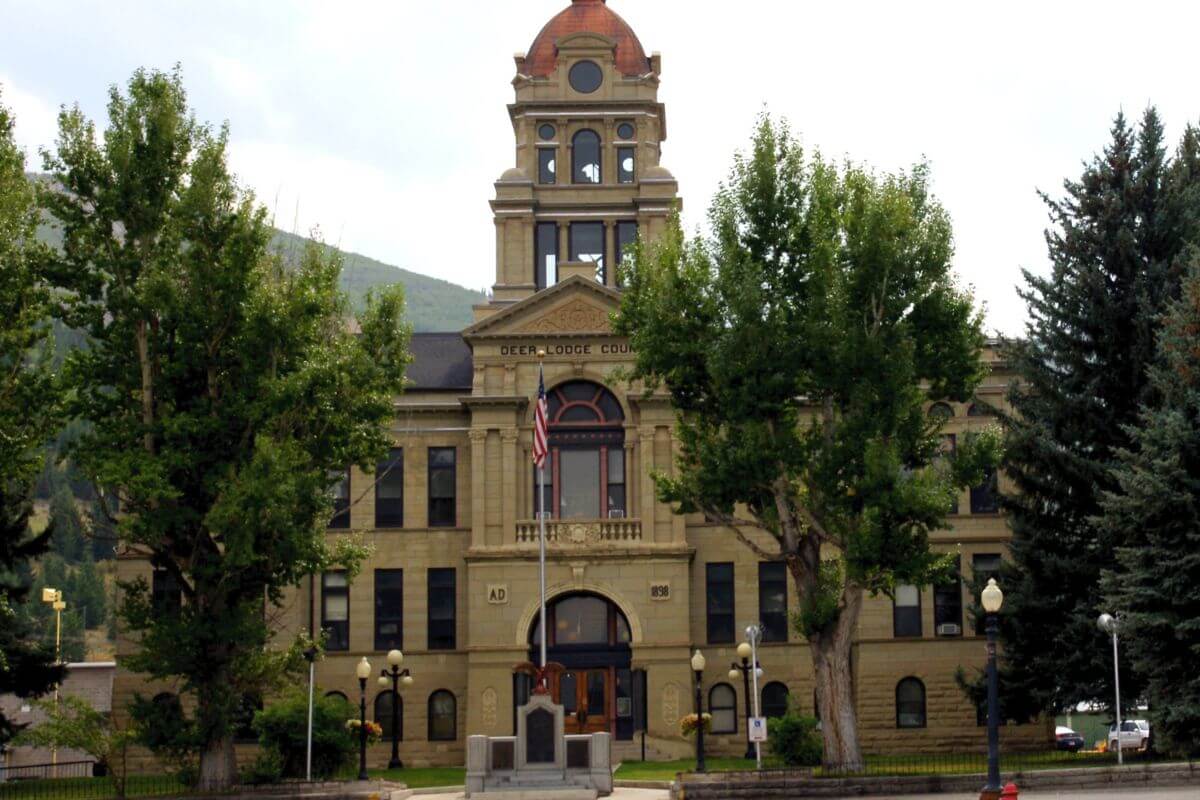
Have you ever heard of Frank Conley? He was the Montana State Prison’s first warden, an imposing figure who led the prison from 1890 to 1921.
During his tenure, the prison faced the challenges of an austere period, the Depression of 1893. The state was left without the necessary funds to make essential improvements to the prison yard.
Conley had to come up with a solution to the overcrowded conditions, antiquated facilities, and discipline problems within the prison. So, what did Warden Conley do? He turned to convict labor.
Believing the prisoners should work, Conley began to update the prison by first replacing its twelve-foot wooden fence with massive sandstone walls.
Conley believed that working could benefit both the inmates and the prison. Prison labor could generate income for the prison that could be used to finance the territorial penitentiary’s expansion and maintenance.
Moreover, working could give the prisoners a chance to learn valuable skills and help them prepare to reintegrate into society upon their release.
Conley implemented an extensive program of convict labor that allowed inmates to work on productive activities. They even managed to raise turkeys that were then sold to the public.
However, despite these efforts, the overcrowding within the prison grounds persisted, and the living conditions for the inmates remained subpar.
It’s fascinating to learn about the role of prison labor in the history of the Montana State Prison.
The innovative approach taken by Warden Frank Conley to generate income while providing inmates with valuable work experience inside prison walls is noteworthy.
Jerry’s Deadly Riot of 1959
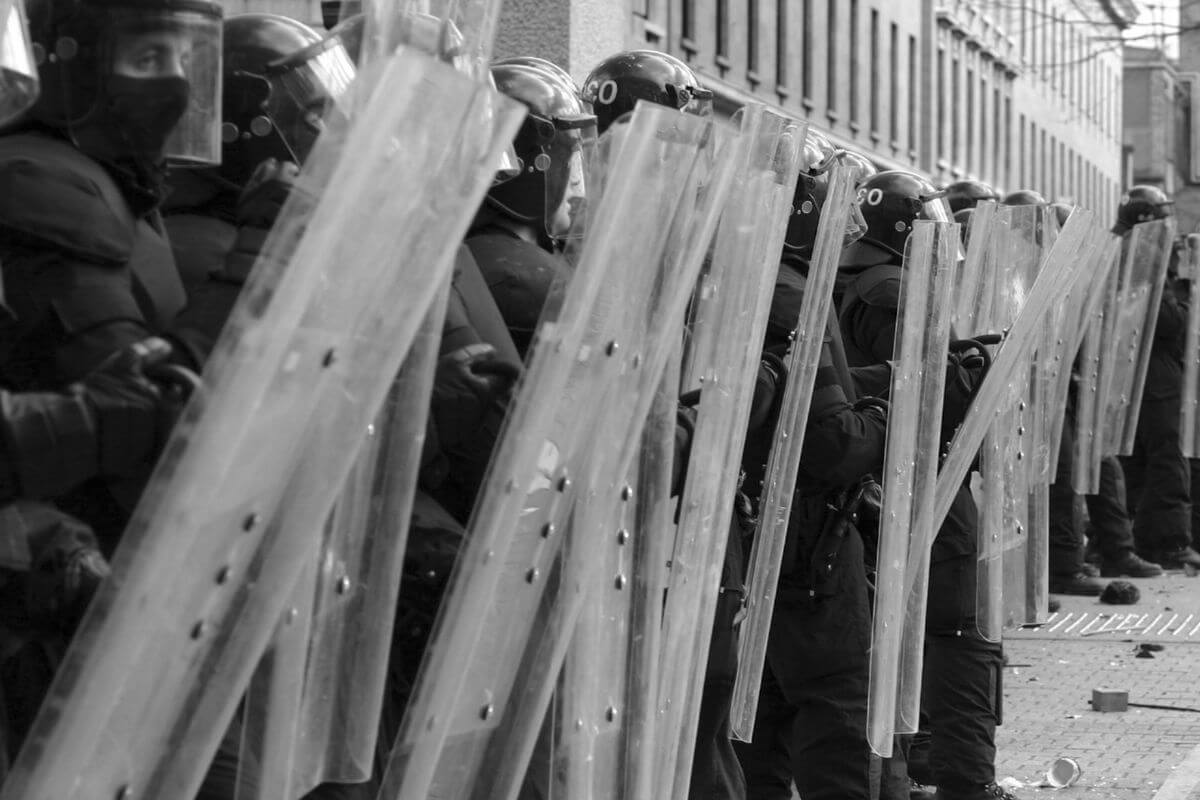
Along with declining living conditions and continuous overcrowding in the Montana State Prison, came a deadly riot on April 16, 1959, that shocked many.
The riot was spearheaded by Jerry Myles and Lee Smart, two of the most dangerous inmates in the Montana State Prison during that time.
The bloody riot left Deputy Warden Ted Rothe dead and eighteen prison employees and five “stool pigeon” inmates taken hostage in three cells on the second tier of the old cell house.
The two men soaked rags with flammable liquid and threatened to burn their captives alive in a moment of complete inmate control.
After 36 hours of mounting tension, Warden Powell implemented a daring rescue attempt.
The National Guard fired a bazooka at the tower where Myles and Smart were headquartered, while a team of men burst through the door in the west wall, crossed the yard, and entered the Cell House, freeing the hostages.
The recoil of the blast had toppled the tower, and as the rescue teams entered the rubble, they found Myles and Smart dead of an apparent murder-suicide at the top floor of the tower.
The casualties and damage left behind were extensive, but the repercussions of the riot were even greater.
With the incident bringing subpar living conditions to national attention, it reopened the conversation on inmate rights and the cruel punishment of overcrowding.
Montana State Prison experienced almost forty years of degeneration, mismanagement, and monetary restraints after Warden Conley’s departure, which likely led to the conditions that sparked the riot.
Finally, 20 years after the fateful incident, in 1979, the last prisoners were moved to a new prison four miles west of town.
Montana State Prison’s Most Notorious Inmates
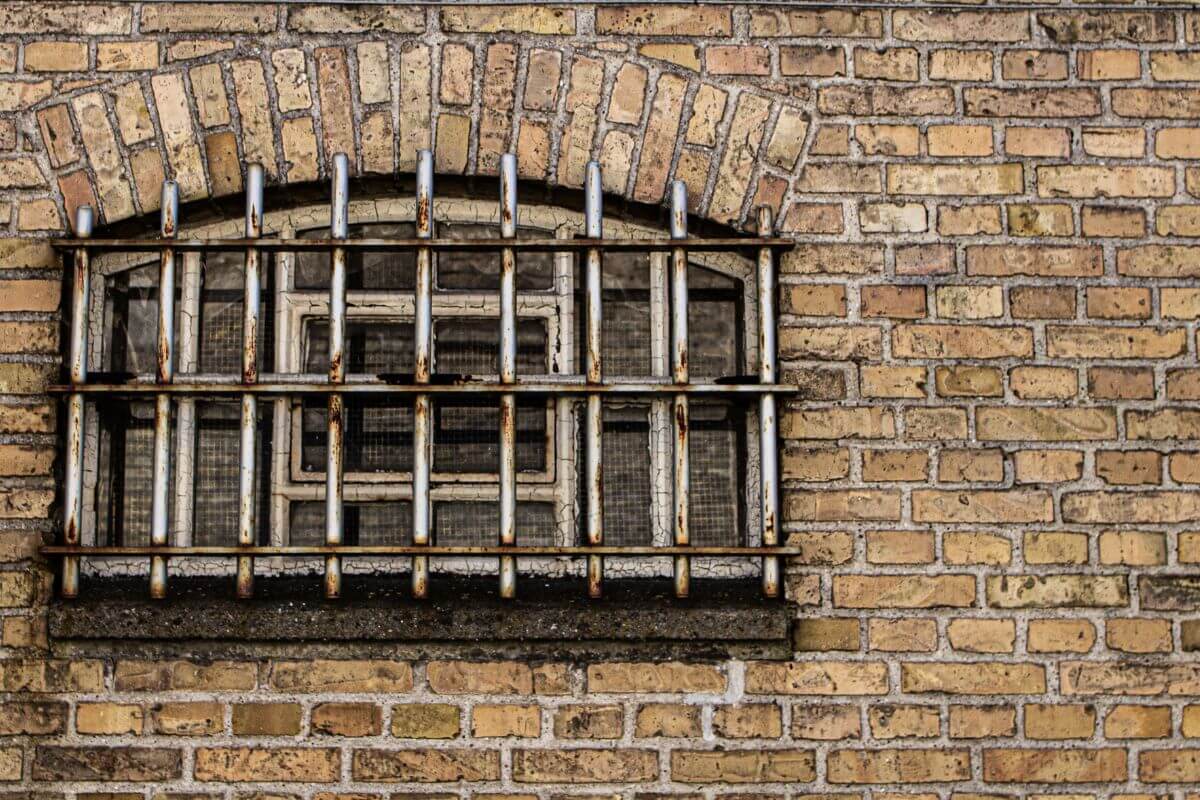
As I stared at the Montana State Prison walls, I couldn’t help but feel a sense of overwhelming perplexity and wonder about those who once called this place their home.
Let’s look at some of the most notorious inmates who once lived at the Montana State Prison.
1. Paul “Turkey Pete” Eitner
When Paul “Turkey Pete” Eitner was sentenced to life in prison for murder at the age of forty, he never imagined that he’d be tending to turkeys for the rest of his days.
However, as a model prisoner, he was assigned to care for the prison turkeys, and it was a task in which he excelled.
But as the years went on, Paul’s mental decline became apparent, and he grew restless and eager for a new “job” in the prison.
He eventually declared himself the owner and administrator of the prison and its facilities, and to everyone’s surprise, the prison officials indulged his desires.
The prison even went to the extent of printing fake checks for “Turkey Pete” so he could pay employees and cover expenses for the prison.
From his cell, Paul became an entrepreneur and philanthropist. He ran a coffee crop, sold pink alligators, purchased alfalfa seed from Pancho Villa, sold grasshopper legs to Fidel Castro, and even sold ships to the Navy.
Until one day, he sold the entire prison turkey flock to a man for 25c each. That is how he gained his name.
2. James Myles and Lee Smart
As discussed above, these two notorious inmates led a three-day riot that took place in the prison. The other inmates became riled up and started causing trouble, which led to the National Guard being called in by the prison guards to help control the situation.
They were eventually found dead of an apparent murder-suicide on the top floor of the tower.
3. George Rock and William Hayes
It’s difficult to imagine the sheer desperation that drove George Rock and William Hayes to attempt an escape from the Montana State Prison yard in 1908.
But for these two inmates, freedom was an elusive, tantalizing dream that they were willing to risk everything for.
Their failed bid for escape ended in tragedy, with the death of Deputy Warden John Robinson and severe injuries inflicted upon Warden Frank Conley.
Both Rock and Hayes were armed with knives so Conley suffered numerous knife wounds which required 103 stitches in total.
The bloodshed didn’t end there, however, as George Rock was hanged on the prison grounds later that same year, while William Hayes met a similar fate in 1909.
They were the only prisoners to be executed on the prison’s premises, a haunting reminder of how far some were willing to go to gain their freedom.
Other notable inmates include William Gollehon, a convicted serial killer on death row, and George Harold Davis, a white supremacist who eventually perpetrated the 2003 Ennis shooting.
- Read more about Montana’s Serial Offenders
The Old Montana Prison Complex: Things to See and Do
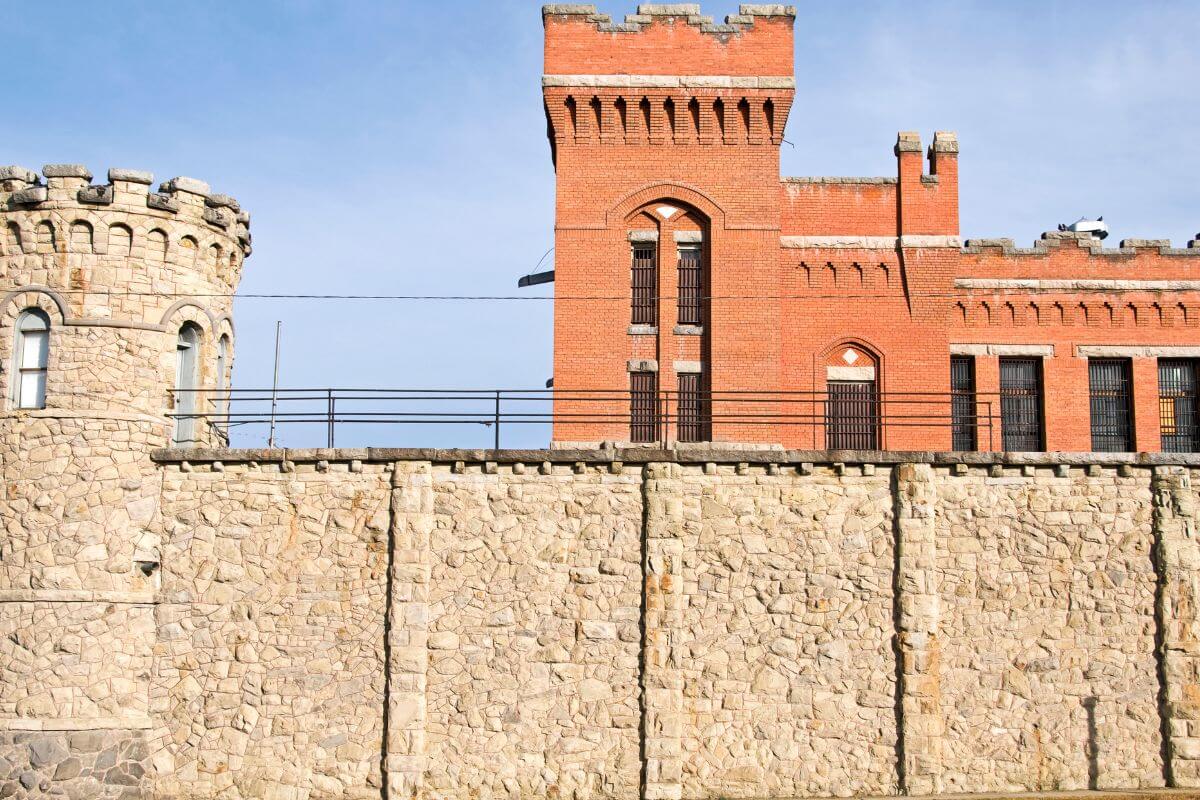
If you’re looking for a unique and intriguing destination in Montana, look no further than the Old Montana Prison Complex.
Thanks to the hard work of the Powell County Museum and Arts Foundation, the old facility has been cleaned and restored, and a visitor’s center has been constructed.
In 1980, the complex was opened to the public, and it now sees more than 40,000 visitors each year. Here, you can walk the grounds, learn about the prisoners who lived here, and take guided tours.
1. Enjoy a Tour of the Old Montana Prison Complex
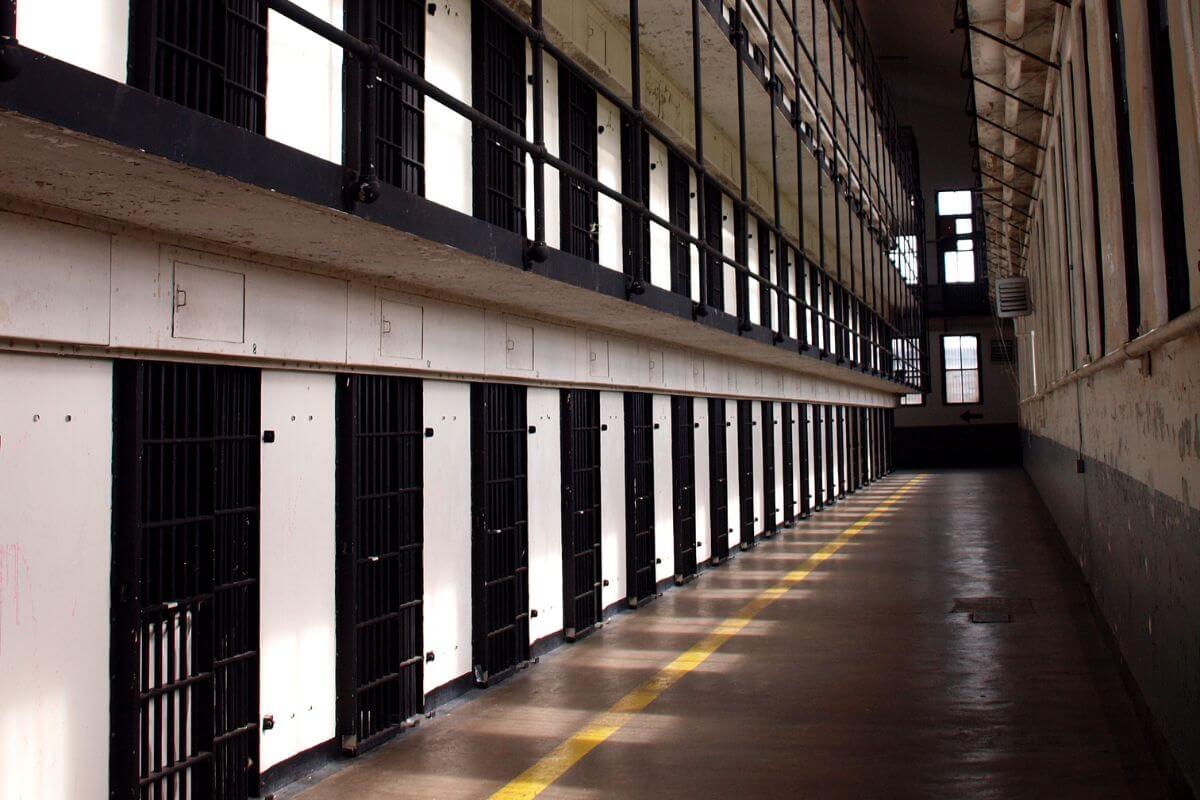
Today, visitors can experience a piece of dark history for themselves through guided and self-guided tours in the Old Montana Prison Complex.
When you visit this place, you’re able to see firsthand the living conditions that prisoners endured during their sentences.
You can explore the cells and learn about the prisoners that once lived there. The exhibits give you a taste of what it was like to be in prison so long ago.
As you walk through the prison, you’ll also learn about the history of the prison itself. The penitentiary became a state institution in 1889 when Montana achieved statehood.
The prison underwent many changes throughout the years, and visitors can learn about its evolution from a territorial prison to a state-run prison through the exhibits in the museum.
For the brave souls, there are also ghost tours offered from 9 PM to 3 AM. This is truly a once-in-a-lifetime experience for those looking to encounter the supernatural.
The Old Montana Prison Complex is considered to be one of the most haunted buildings in Montana, and some visitors claim to have seen and heard some unexplainable things during their tours.
You simply can’t miss exploring this fascinating piece of Montana’s history.
2. Explore the Powell County Museum
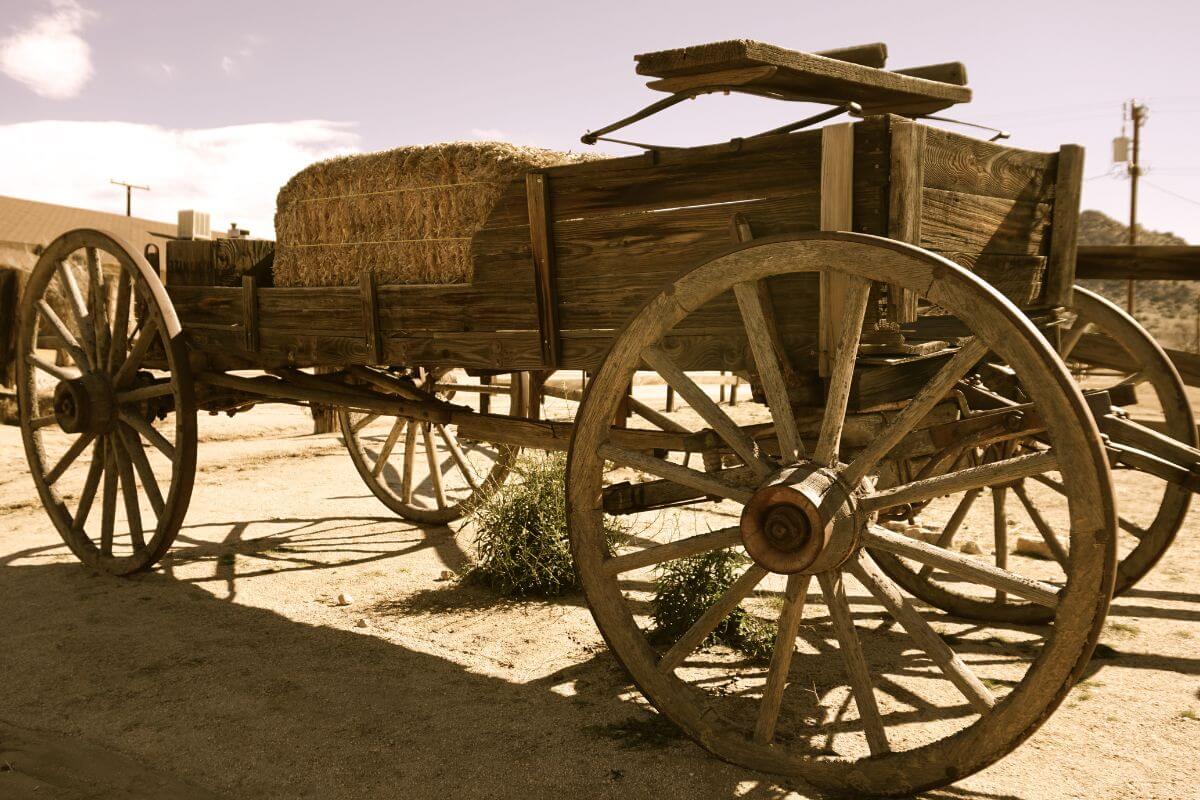
From handmade furniture to unique mining equipment and even an old stagecoach, this museum is an absolute treasure trove for history enthusiasts.
What sets this museum apart is the diverse range of antiques and unique items on display. As I explored the exhibits, I discovered fascinating handmade furniture pieces that give a glimpse into the life and times of the residents.
The intricate craftwork and attention to detail in each piece is truly awe-inspiring.
But that’s not all – the museum also boasts an impressive collection of mining equipment, highlighting the significant role that mining played in the region’s development.
As I viewed the old gear, I felt as though I was experiencing a part of history firsthand.
And of course, no visit to the Powell County Museum would be complete without checking out the old stagecoach. This iconic piece of local history is a must-see for visitors.
- Read more about Montana’s Historical Occurrences
It serves as a reminder of the progress made over the years in transportation, and how this stagecoach was an essential part of daily life for residents of Deer Lodge.
Overall, the Powell County Museum is a true delight for anyone seeking to learn more about the rich history of this area.
3. Wander Through the Montana Auto Museum

This museum is unlike any other, boasting one of the best collections of automobiles in the United States.
As I meandered through the captivating exhibits, I was mesmerized by the unique displays of vintage cars. The standout pieces for me were the Thermador Car Cooler, the Aqua-Scooter, and a replica of the first “vehicle” created by Karl Benz in 1886.
Each display provides insight into the evolution of automobiles and highlights the profound impact that vehicles have had on our lives.
Beyond the captivating exhibits, the Montana Auto Museum offers a host of history lessons that can be learned.
The displays showcase the engine’s evolution from an essential tool for farming, mining, and industry to a symbol of freedom and mobility.
The cars demonstrate the advancements in technology and design that have allowed vehicles to become faster, safer, and more efficient throughout history.
4. Take a Walk at the Frontier Museum
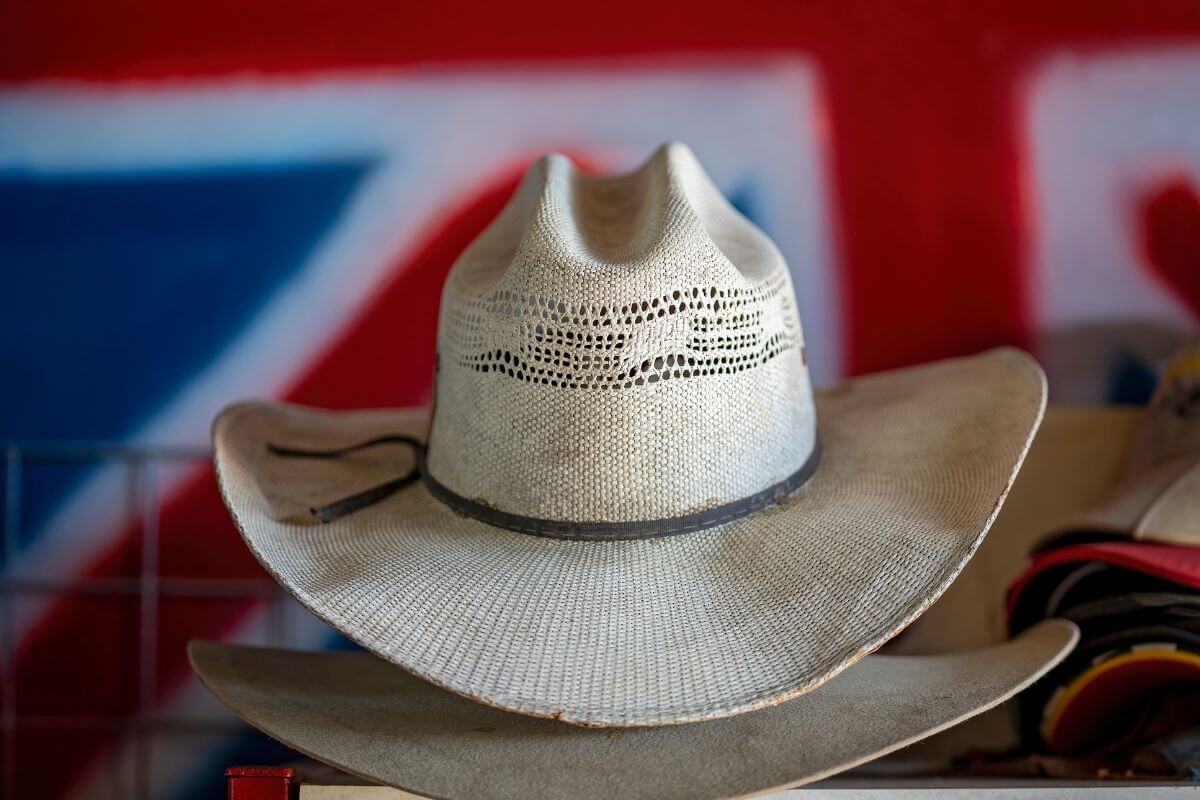
Nestled in the mule barn of the Old State Prison, this museum offers a peek into the history of the Wild West like no other.
One of the most enthralling exhibits in this museum is the cowboy collectibles. As I peruse the halls of the Frontier Museum, I am awed by the vast array of cowboy hats, spurs, and saddles. It’s as if I am right there with the cowboys, riding off into the sunset.
The antique firearms exhibit is another major attraction. These guns tell the stories of the iconic lawmen and outlaws of the Wild West.
As I admire the intricate details of each firearm, I can almost hear the sounds of gunfire and feel the adrenaline rush of a high-speed chase.
One of the most fascinating exhibits is the Desert John’s Saloon Museum. It’s a recreation of the infamous saloon, which was once the hub of activity for cowboys and townsmen alike.
The display showcases the photographs, newspaper clippings, and ephemera that capture the true spirit of the Old West.
I also suggest checking out Yesterday’s Playthings, a collection of vintage toys that date back to the 19th to early 20th century.
The intricate dollhouses, tin wind-up toys, and handmade dolls make for a whimsical trip down memory lane.
And last but certainly not least is Cottonwood City, a life-size recreation of an Old West town. This exhibit captures the essence of the Wild West with its colorful wooden buildings, horse-drawn carriages, and street lamps. It’s as if I am walking through the streets of an actual frontier town.
Montana State Prison Final Thoughts
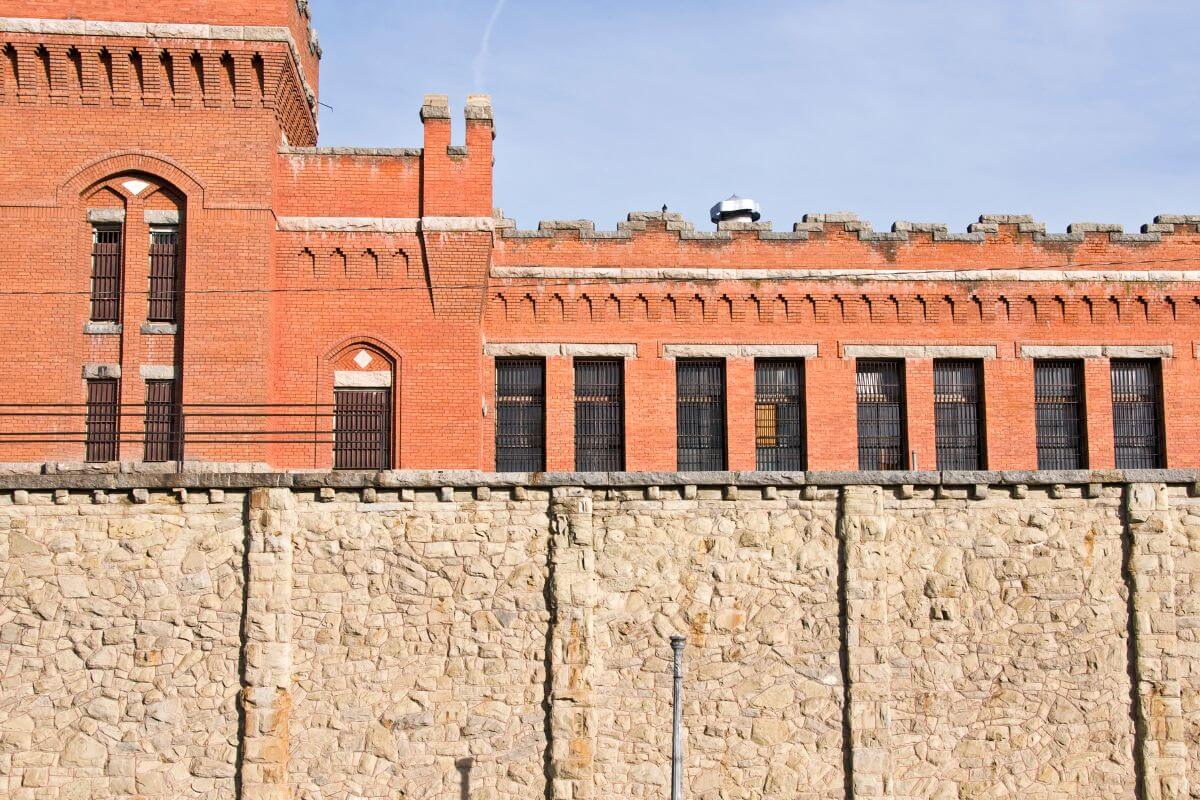
The Montana State Prison holds a rich history that is worth exploring despite its dark past and notorious inmates.
There is so much to learn from its evolution from a federal building to a state-run prison. Its past became a warning of what can happen when a prison fails to meet the basic human needs of its prisoners and treats them like animals.
These days, visitors can enjoy a recreation of the infamous Desert John’s Saloon Museum, view vintage toys from Yesterday’s Playthings, as well as witness a life-size recreation of an Old West town in Cottonwood City.
Montana State Prison Final FAQs
1. Is Jail and Prison the Same Thing?
You might think that jail and prison are interchangeable terms, but they’re actually quite different.
To put it simply, jail is like a temporary holding cell for those who have been arrested, while prison is reserved for those who have been convicted of a crime and are serving a sentence.
2. Are Prisons and Correctional Facilities the Same Thing?
Institutional corrections facilities refer to both prisons and jails, which serve different purposes. Prisons are state or federal housing facilities that confine convicted felons with sentences longer than a year. On the other hand, jails hold those with shorter sentences, usually for one year or less, and those awaiting trial.
And while prisons may house thousands of inmates, jail populations are typically much smaller.
3. What Is the Oldest Prison in Montana?
The Montana State Prison is the oldest prison in the state. In 1870, the construction of the Montana Territorial Prison began, and its first prisoner was received in 1871.
4. How Long Did the Montana State Prison Riot Last?
The riot lasted for a grueling 36 hours, with inmates seizing control of cell blocks and taking hostages. The causes were multiple, from intolerable living conditions to ill-treatment of prisoners. The prison staff was caught off guard and ill-equipped to handle the situation, and the result was catastrophic.
5. When Did the Montana State Prison Close?
The deteriorating prison facilities and poor living conditions that existed within its walls eventually led to Montana’s State Prison’s closure in 1979.
Uncover additional details about Montana through these other mind-boggling articles:

